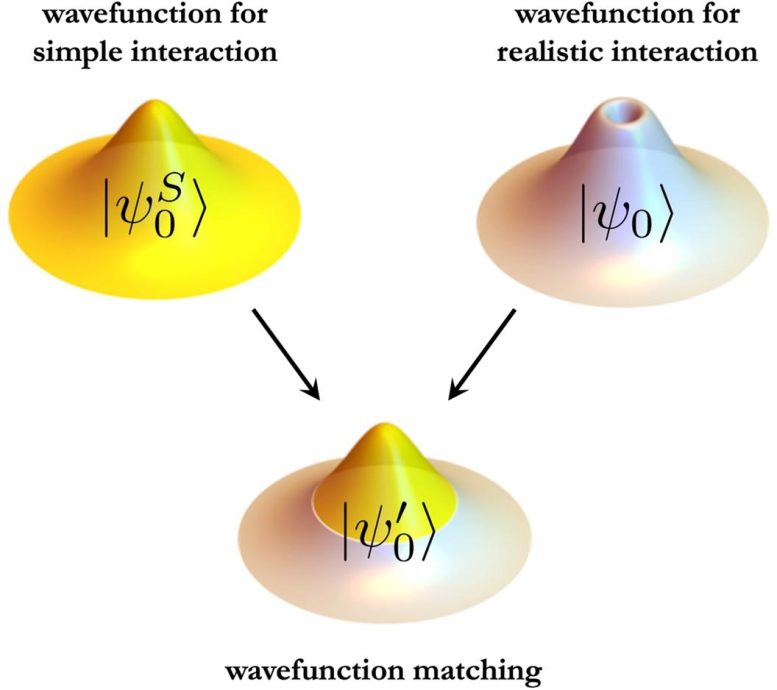

Wavefunction matching is revolutionizing the study of quantum many-body systems, allowing scientists to perform previously impossible computations by adjusting interactions at short distances.
This technique enables accurate simulations of light nuclei, medium-mass nuclei, neutron matter, and nuclear matter, closely matching empirical data on nuclear properties. This breakthrough is beneficial not only in quantum computing but also in classical computational applications.
Quantum Many-Body Systems
Quantum many-body systems are incredibly complex, presenting significant challenges for even the most advanced computers. Scientists often employ the ab initio approach to analyze these systems, which breaks down complex systems into basic components and their interactions. However, certain ab initio methods encounter severe computational challenges with realistic interactions. Wavefunction matching offers a novel solution by modifying particle interactions at short distances to align their quantum state wavefunctions with those of a more computable interaction. This adjustment facilitates solving previously impossible calculations.
Exploring the Wavefunction Matching Approach
In this research, scientists implemented wavefunction matching to conduct lattice simulations using realistic interactions. They tested this method on light nuclei, medium-mass nuclei, neutron matter, and nuclear matter, achieving theoretical results that align closely with empirical data concerning nuclear size, structure, and binding energies. This method not only enables previously unfeasible calculations but also has broad applications in both classical and quantum computing.

Implementing First Principles in Quantum Calculations
Researchers using methods for quantum many-body systems that start from first principles frequently find that they can perform calculations using a simple approximate interaction, but realistic high-fidelity interactions are not possible due to computational problems. This research introduces a new approach called wavefunction matching that solves this problem by using surgery. Wavefunction matching removes the short-distance part of the high-fidelity interaction and replaces it with the short-distance part of an easily computable interaction.
Achievements and Applications of New Research
This transformation is done in a way that preserves all the important properties of the original interaction. Since the new wavefunctions look like those of the easily computable interaction, calculations can now be performed using the easily computable interaction, together with a standard procedure for handling small corrections called perturbation theory. The researchers applied this new approach to lattice simulations for light nuclei, medium-mass nuclei, neutron matter, and nuclear matter.
For more on this research, see International Team Cracks a Long-Standing Physics Problem.
Reference: “Wavefunction matching for solving quantum many-body problems” by Serdar Elhatisari, Lukas Bovermann, Yuan-Zhuo Ma, Evgeny Epelbaum, Dillon Frame, Fabian Hildenbrand, Myungkuk Kim, Youngman Kim, Hermann Krebs, Timo A. Lähde, Dean Lee, Ning Li, Bing-Nan Lu, Ulf-G. Meißner, Gautam Rupak, Shihang Shen, Young-Ho Song and Gianluca Stellin, 15 May 2024, Nature.
DOI: 10.1038/s41586-024-07422-z
This research was funded by the Department of Energy Office of Science and by an extensive array of German, Korean, Turkish, Chinese, and other organizations. For a complete list of funding sources, please see the paper in Nature.